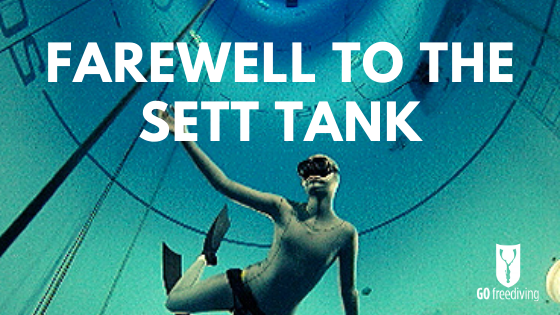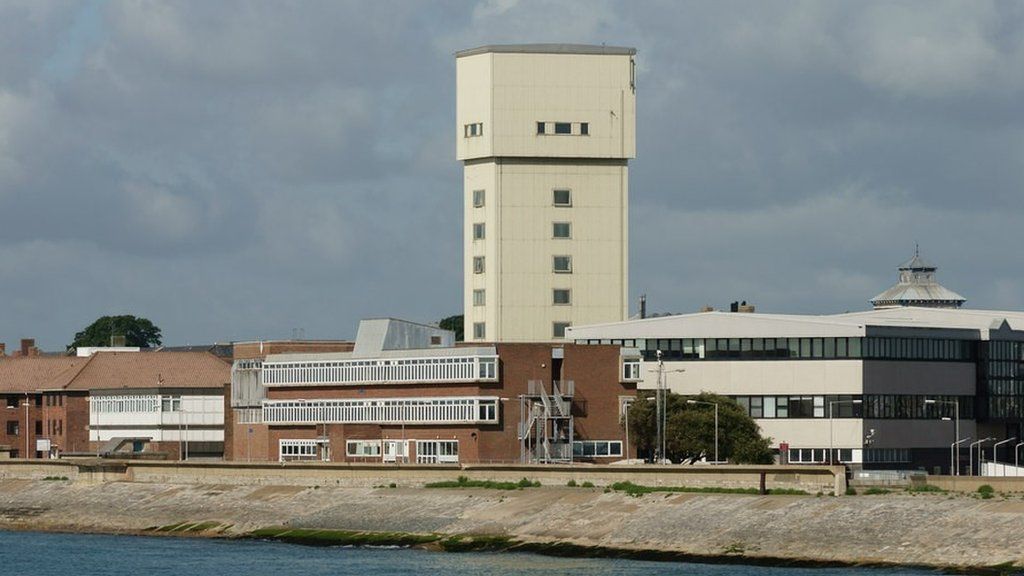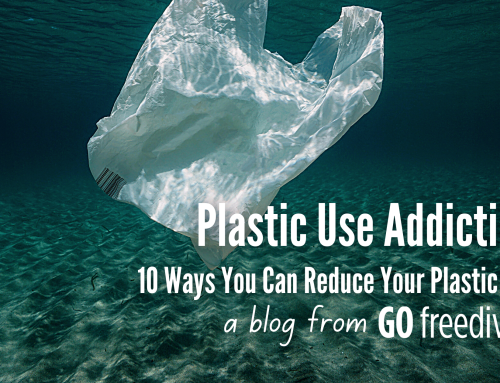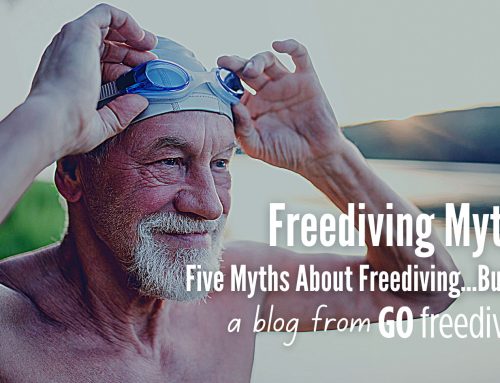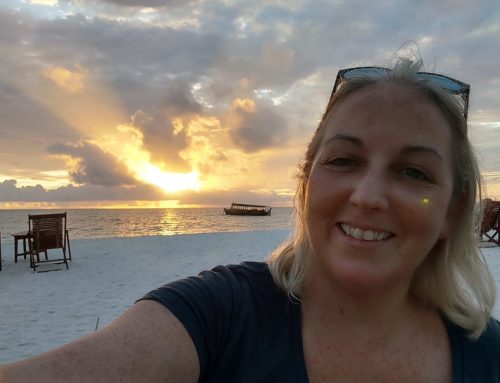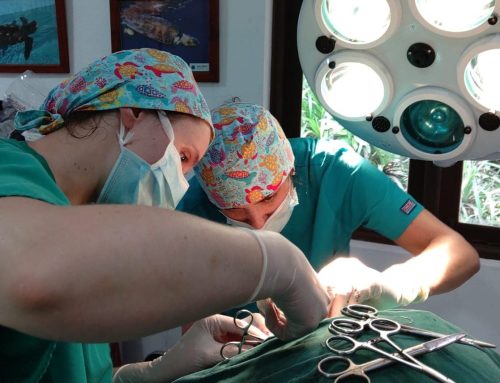This content has been archived. It may no longer be relevant
In a recent press release the Royal Navy announced the SETT Tank in Gosport was closing. They said:
“For the last time the team who teach submariners how to escape from a stricken boat gather at a Gosport landmark before the iconic structure closes.
…During the peak of usage in the 1960s and 70s, around 4,500 submariners every year made the daunting ascent – it’s thought the escape tank has been used more than 150,000 times in its 66-year life.
Today the tank is just one element of the UK’s submarine rescue capability, which also includes the Submarine Parachute Assistance Group (who leap from aircraft into the water to help crew who’ve escaped from a boat as taught in the SETT), and NATO’s Submarine Rescue System ‘Nemo’, also based in Faslane…
…In the SETT’s existence, only one British boat – HMS Artemis – has been lost (she sank at her moorings in an accident in 1971, ironically just a stone’s throw from the tower), without any casualties…
In its place, opening later this year, is the Submarine Escape Rescue Abandonment and Survival Training Facility (SMERAS TF). The team will be moving en-masse from Gosport to Faslane, leaving a skeleton team behind on the south coast.
As for the SETT, it will be preserved as it is a listed building, “protected by law for its national and international role in submarine safety.”
What was the SETT Tank and what was it for?
The SETT tank is tucked away at the back of a Naval base in Gosport. It would be hidden, except its height means that it towers above all the other buildings and can be seen from miles away!

My Memories of the SETT Tank
I first heard about the SETT tank whilst standing outside a bar in the pouring rain just after midnight on New Year’s Eve in Fuerteventura. I had been thinking about freediving for a few years, but it remained a secret dream until that night. I was on holiday with a friend and we had spent the early part of the night at a restaurant, talking about what we would do if we had ‘another life’. I confided that I wanted to be a freediver and told her what little I knew about it.
After the restaurant we went to find a bar to see the new year in, and got chatting to a British man who said he lived on a boat in the Canaries. ‘What do you do?’ we asked. ‘I’m a freediver’ he replied. It seemed like divine providence and I dragged him outside so I could hear everything he had to say. It was he who told me about the SETT tank, and the group of British freedivers who went there on the weekends to freedive.
Back in the UK, I found them, got in touch and travelled all the way down from Manchester to Gosport for the weekend for my first introduction to freediving. Little did I know at the time that this was the start of a whole new chapter of my life.
I remember the sense of awe the first time I negotiated the severe security guards and made my way to the classroom for a safety briefing on the ground floor. The main corridor was lined with photos of former students, photos of submarines, world records of ascents from submarines, and memorabilia from navies around the world who had sent students to do the escape training course at the SETT.
Nothing prepared me however for travelling ten floors up in a lift to the top of the tank and looking down over the edge to the bottom, 28.1 metres below.
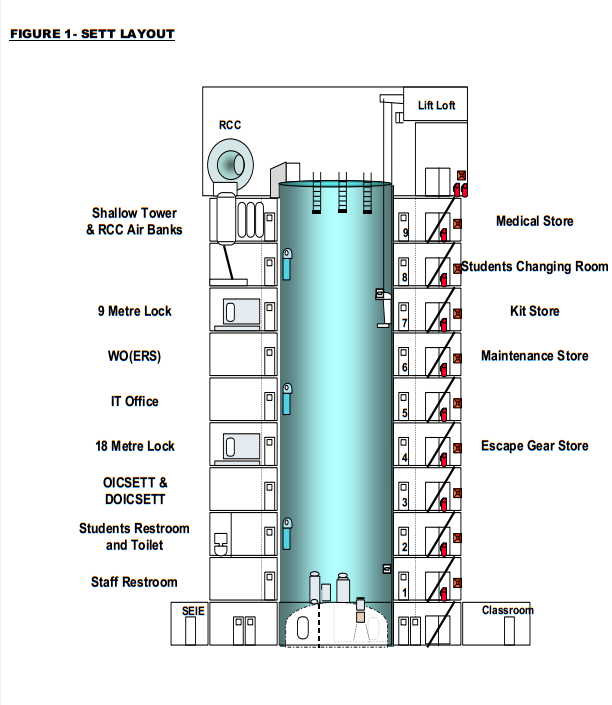
I suffer from vertigo, and I felt dizzy looking down through the crystal clear water. It seemed so very very deep.
Teaching at the SETT Tank

Emma teaching Zania Kidd at SETT Dec 2009
I have so many memories of the SETT tank: The voluptuous mermaid painted at the bottom, the first time I pulled down to the plate, the staff, the green dressing gowns, the lift all the way down to the ground floor in order to have a pee, the movement of the building in high winds, and seeing the choppy sea out of the windows.
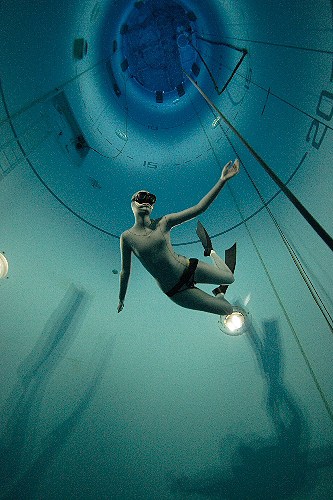
Emma at the bottom of the SETT, photographed by Fred Buyle
The SETT was the place I was introduced to freediving, fell in love with the sport, and made the decision to change my life and career. It was the place I first taught students, and where I met world champion freediver Fred Buyle, who went on to provide all the photos for my freediving book ‘One Breath, a Reflection on Freediving.’ Little did I know that first weekend, how the next twenty years of my life would unfold, all thanks to the SETT.
Learn to freedive with Go Freediving
Go Freediving is the longest established, most experienced and friendliest freediving course provider in the UK, led by world class freediving instructor trainer Emma Farrell, and her team of personally trained instructors. No other course provider has such a good instructor to student ratio, safety record and personal touch.
Whether you’re a beginner dipping your toes into the world of freediving, a seasoned pro looking to turn professional, or simply a freediver of any level who wants the best freediving holiday in the world, we’re here for you!
Also check out our online guide, The Beginners Guide to Freediving by clicking here!
Keep in touch with everything Freediving
Subscribe to our mailing list for weekly newsletters with exclusive articles, news, films, offers and more!
And check out You Tube!


